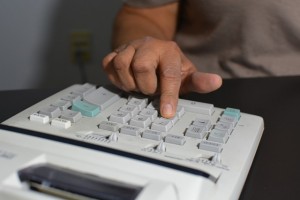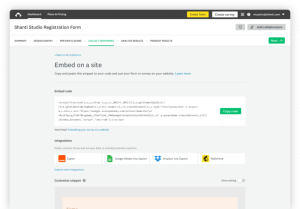Our country is at a tipping point. The economic devastation of COVID-19, the ground-shaking Black Lives Matter movement, and unprecedented divisiveness are affecting nearly every individual and business in the United States. We have often heard the term “collective empathy” applied to the current moment. We are all in the same boat, it’s argued, so we must all be able to find common ground.
In fact, we need to find common ground in order to find solutions to some of the largest problems facing our society today—many of which will be solved by business leaders. Vaccines and treatments. Leadership on public health issues. Innovations to allow our children to learn safely. Changes to our systems to enable racial and economic justice.
But that collective empathy does not exist today, not in the true sense of the word. In order to face down the big, complex problems that will continue to challenge us, we must educate a generation of thinkers in integrity and inclusiveness—citizens who understand that problem-solving isn’t about dribbling your expertise down to the people experiencing the problem, but that it’s about listening to the needs of stakeholders and allowing your own solutions to be impacted by them. In short, we are a society short on empathy, and to move forward, that must change.
What is real empathy?
Empathy is perhaps the most overused and misunderstood term in education today. From preschool on, teachers tout academic exercises in empathy. But actually, what they’re teaching is compassion: a sympathy or concern for the well-being of others. It’s an admirable trait, but when it comes to problem-solving and innovation, it has one flaw: It tends to be a highly emotional experience—one that clouds better judgment.
True empathy is understanding the needs of the stakeholders facing a problem and allowing those needs to change your mind about what the best solution might be.
Empathy, which is the key trait of a thoughtful and inspired citizen, should be reflexive—and it can be, when taught as a process called human-centered design. As we lay down plans for the New England Innovation Academy, the first middle and high school focused on human-centered design in the United States, we’re translating these concepts, typically meant for product design, into problem-solving and relationship building as well.
Our goal is to release an army of citizens—voters, leaders, innovators—who approach problems through the eyes of their stakeholders, and understand that at issue are people who have thoughts, needs, and emotions. They need those taken into account—they don’t just need an expert telling them what to do, with little or no experience in their shoes.
We have too much emphasis on leaders in our current structure, when our country’s leadership has little impact on our day-to-day experience. What does matter is how we experience the people around us—how we are treated at school, work, or in line for coffee. These are the details that allow us to practice empathy, but first, it must be developed. And, just like anything else, we can do so with discipline and through a process.
Teaching empathy as a process
All of the talk about empathy is rarely backed up with the structure, process, and discipline to make it reflexive in students. Many parents, educators, and business leaders think of empathy as a soft skill—something that will help their kids build good relationships. We’d argue it’s the opposite: Empathy is core to the success of our future innovators and entrepreneurs when it’s taught as part of the human-centered design process.
Imagine a typical high school community service project. Perhaps a class is asked to design a good after-school program for inner-city kids. In a typical school, the class might sit around and brainstorm ideas. Their teacher might provide input on some of the issues these kids face, and they might come up with a creative program that addresses many of them. Maybe they even help run or manage a summer camp for their target population to test out their concept.
In a school focused on human-centered design, there would be no classroom brainstorming without a visit to the kids, parents, and educators who would be participating in the program. They’d start there, to discover what their needs are. These are high school students—they may not be thinking about the scheduling needs of the parents. They may not have any experience with food insecurity. They may not understand the interests of younger kids from different backgrounds or cultures. They might not know what areas educators feel the students need more help in. A conversation with these stakeholders would give them this insight, so before the students start brainstorming ideas for their community project, they truly understand what the people participating both need and want.
And beyond that, the students would go back to their stakeholders over and over throughout the process, to ask more questions, float solutions, and get their feedback and buy-in, before they launched a summer camp. By the time they had a program developed, they would know that it meets the needs of the students, parents, and educators. But beyond that, they would have gained a better understanding of these three groups through the process of talking to them.
Our goal is to instill this human-centered design process into everything our young people do, so they grow up to be people who do not instantly jump to a conclusion or try to enforce an expert opinion, but rather leaders who ask questions and try to understand the needs and emotions of the other people involved. Empathy should be a reflex people use to find the right solution to a problem, not the experience of feeling pity or sympathy toward others.
Empathy as a path toward innovation
Starting to solve a problem by asking its stakeholders what’s important to them seems simple, but it’s not the way most innovation works today. For the most part, entrepreneurs, inventors, and policymakers think of themselves as experts, armed with knowledge to solve problems for other people. But the fastest way to an effective, innovative solution is to ask the people affected from the very start and to be true to their needs through the process of product development or representation by elected leaders.
Empathy is a way to avoid severe swings of the pendulum, often driven by either emotion or not understanding the needs of other stakeholders in a problem. By providing a fuller view of the problem at hand, human-centered design provides a way to bring both sides together to a solution that suits everyone’s needs—whether that’s in policy or product.
It’s also a path toward a better experience for citizens, who will be able to engage with and impact the communities of which they are part. While many people consider human-centered design’s business use, or apply it to law or policy, it in fact has universal appeal and utility to our society. After all, uncovering our common humanity may be what this crisis needs most.
Matthew Kressy is the founding director of MIT’s Integrated Design & Management (MITidm) master’s program and innovation adviser and trustee at New England Innovation Academy. Tom Woelper is the founding head of school at New England Innovation Academy.
Fast Company , Read Full Story
(52)







